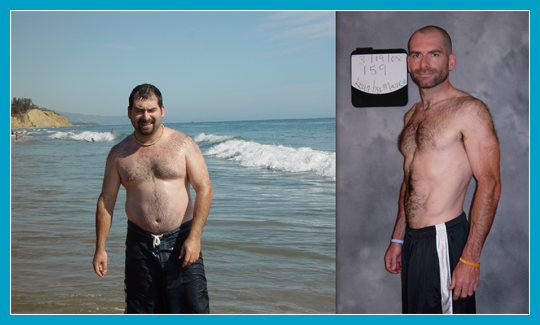We all want to be in control of our food (and not the other way around). The more often we weigh our food (especially when eating at home) the less likely we are to over-eat.
You may think that weighing something you’re about to eat sounds like a drag but it’s not. On weigh-in day, losing pounds and feeling good about it is no drag.
Using a food scale also gives us really good practice in visually confirming how much a portion really is. The more we do it the better we get at spotting too much food.
How many calories is a serving of french bread, almond butter or dark chocolate? When we figure it out it opens our eyes.
With so many foods packaged with multiple servings all mixed in together or recipes that contain lots and lots of different ingredients, it’s often times difficult to know how much we just ate.
Taylor makes an affordable “Biggest Loser” scale available at Bed, Bath & Beyond for about $19 bucks. It’s nice and roomy so you can fit large bowls or medium plates and still see the display. It weighs up to six pounds of food and can measure in both 1 gram and .1 ounce increments so it’s pretty much got you covered. Another plus is that it uses lithium batteries which last longer than traditional alkalines.

Scale (noun) The relative size or weight of something.
Here’s how I use my Biggest Loser scale to quickly figure out how much food i’m about to eat.
1) I’m about to eat some almond butter. I turned the scale on and toggled the units from ounces to grams (left button). I put my almond butter jar (with no lid) on the platform and it weighs 439 grams.


2) Once I had an accurate weight, I pressed the power button again (right button) to tare out the weight (set it back to zero). This is important because whatever I eat out of the jar will display as being minus this much. Like this:

3) I scooped out 30 grams of almond butter for my sandwich and the scale just totally helped me see how much gooey deliciousness I’m about to eat. Pretty cool huh?

4) Lets take a closer look at the nutrition label* to translate my 30 grams of almond butter into an accurate amount of calories.
The most generally useful items to look for on a nutrition label (aside from healthy, unprocessed ingredients) are Serving Size and Calories. Since I’m using a gram/ounce scale I chose to use 32g instead of 2 Tbsp for my measurement. Turns out my 30 grams of almond butter was slightly less than a full serving (32g).
[ Fats, sodium, carbs, sugars and proteins are also important macro-nutrients, but I'm not particularly concerned with them in this example. ]
Now that we know how much a full serving is and how much my scoop weighed, here is a cool way to use some basic math to figure out the calories.
Much like a spreadsheet, you can type in a little equation into the calories field and work food out will do the math for you.
Using math makes it really quick and easy to log food items you eat regularly (no matter how much you ate).
The numbers with a gray box indicate math was used to come up with the calories. Rolling your mouse over food items with math will reveal the equation.

As you can see for my “30 g almond butter” entry, I took 190 calories and divided it by 32 grams (a full serving) using the (/) symbol. I then used the (*) symbol to multiple it by 30 to help me figure out how many calories of almond butter that is. The result of 190/32 is the number of calories in each gram (6 calories). When I then multiplied by 30 it told me how much I ate.
The math I entered was 190/32*30 and work food out automatically tallied it up for me.
That scoop of almond butter ended up being 178 calories. It turned out that eating 30g instead of 32g was 12 calories less than had I eaten a full serving (190). This method can apply to any labeled food product whether its serving size is in grams, ounces, tablespoons, cups, etc.
With work food out math you can add (+), subtract (-), multiply (*) and divide (/) etc. Try it.
Get used to using math (when applicable) when you log your food. It’s great for when you dip into the almond butter again the next day only to pull out 35 grams instead of 30. Just reuse your last almond butter entry and change the 30’s to 35’s and you’re good to go (190/32*35). Work food out will do the math for you. Here’s a little how-to video showing another way to use math. » Bryan

